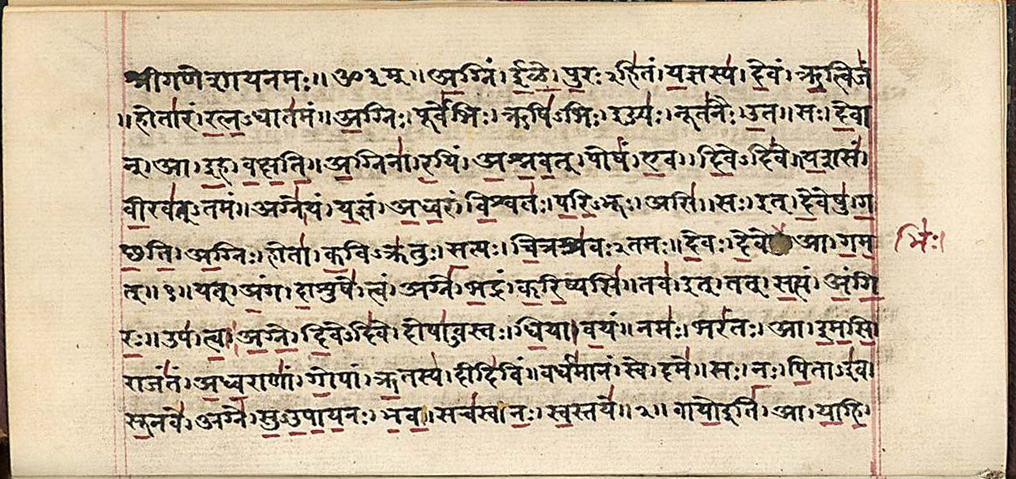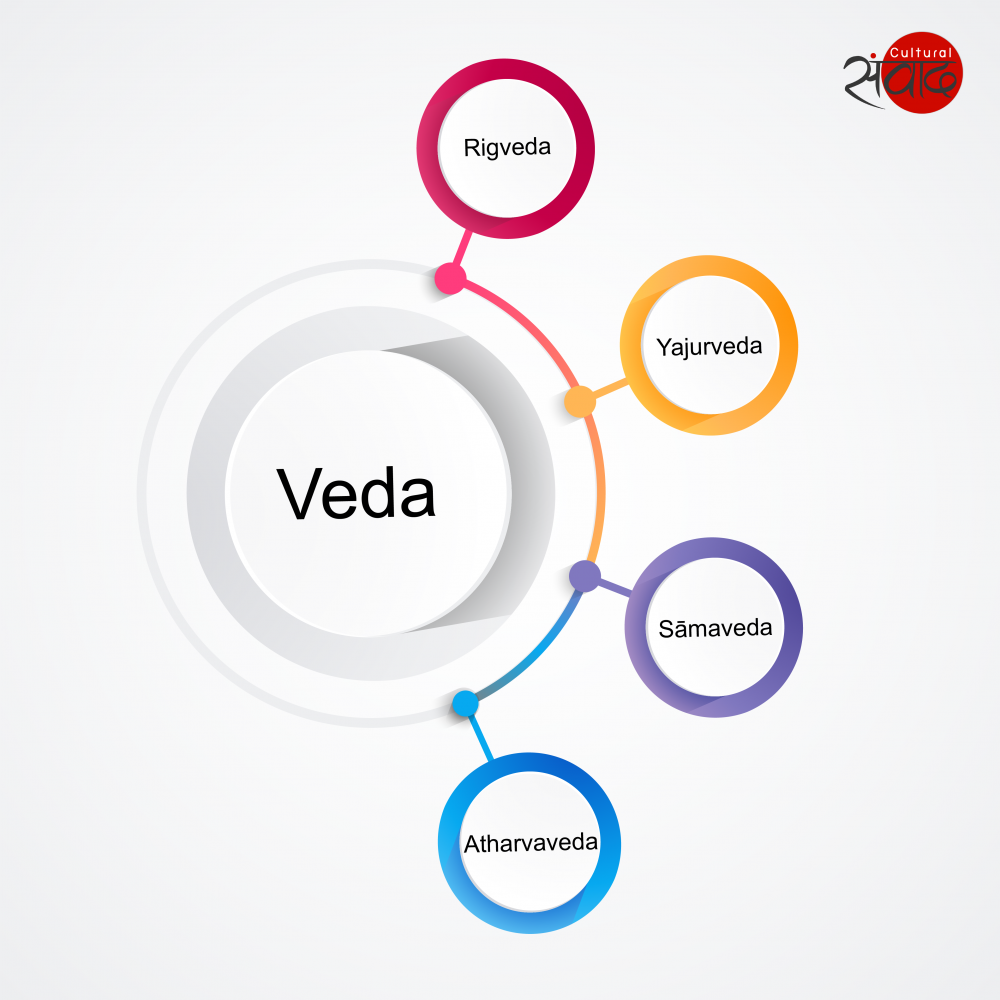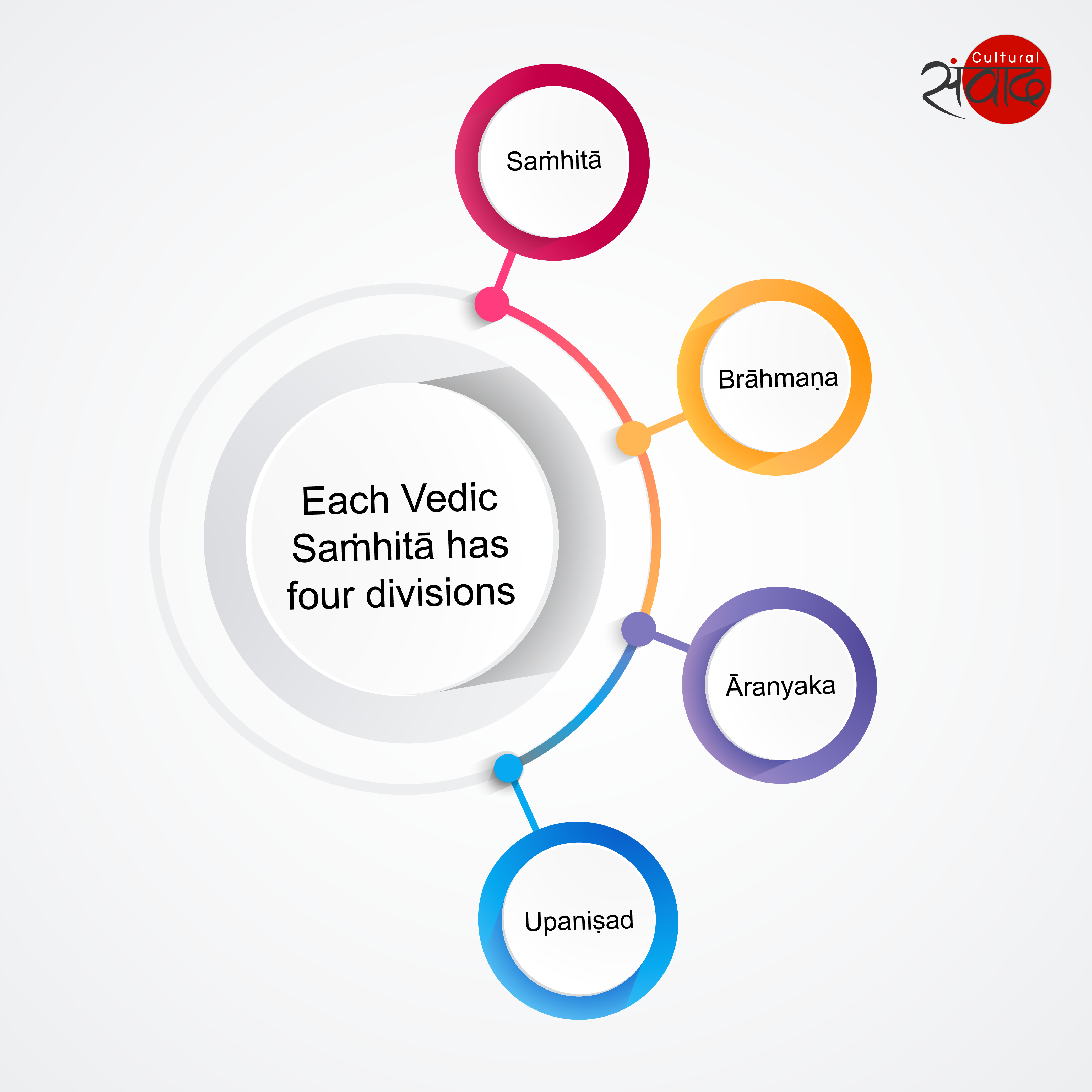
The Vedic texts are the holiest of the Hindu scriptures and are regarded as the foundation for most systems of extant Hindu philosophies. They are in Vedic Sanskrit or a more archaic form of the language, which is different from the Sanskrit used for instance by Kalidasa in his Meghaduta or Chanakya in his Arthashastra.
 Question I – What are the Vedas?
Question I – What are the Vedas?
The word Veda comes from the sanskrit root vid (विद्) – to know. This is the sacred knowledge or the holy learning which is said to be found in the Vedas. The content of the Vedas ranges across a wide range of subjects. They deal with religious, laudatory, cultural, ritual, martial, marital, secular, social, magical, philosophical, mystical and even funerary events. This whole mass of knowledge was divided or compiled into four parts. Thus, we have four Vedas – Rigveda, Yajurveda, Sāmaveda and Atharvaveda.
Question II – What do the Vedas contain?
While the Vedas are divided, the divisions are not concrete and we find something of everything in each of the texts. Broadly:
- The Rigveda is said to have the laudatory hymns, i.e., the verses in praise of the early Vedic deities.
- The Yajurveda has the liturgical formulae, i.e. the verses for the performance of the sacrifices (यज्ञ).
- The contents of the Sāmaveda are a repetition of the Rigvedic verses to a very large extent. But the same chants are set to a fixed melody. The verses will be chanted in a different manner if quoted from the Rigveda and sung in a different manner if taken from the Sāmaveda.
- The Atharvaveda has magical incantations. This particular Veda is said to deal with the everyday problems of the masses which are solved with the help of magic rather than the elaborate sacrificial rituals as suggested by the other three Vedas.
Question III – Who composed the Vedas?
Vedic literature differs from other religious literature as the Vedas have no author or composers. Each hymn has a ‘seer’ (ऋषि) associated to it, who is not the composer but one who has ‘seen’ the hymn or ‘heard’ it and later compiled the composition. Since, they may have been heard too, they are also referred to as Śruti (श्रुति). The Vedas are considered of divine origin. Traditionally Veda Vyasa is considered as the compiler of all the four Vedas. He is supposed to have later divided them into four parts depending on the subject matter and charged four of his disciples with assimilation, preservation and finally the transmission of the hymns on to the next generations[1]
Question IV – How were the Vedas transmitted?
The significance of the Vedic literature lies in the fact that the complete work was composed, memorised and transmitted orally. The oral tradition successfully passed on the knowledge of the Vedas for many centuries before they were actually written down. The need to preserve this oral tradition without any errors and omissions had given rise to a whole set of ancillary literature and systems specifically designed to aid this memorisation. We find some of the most elaborate teaching and learning systems associated with the memorising of the entire Vedic literature. The ancillary literature has detailed rules on pronunciations and the modulation of the chants to make sure that the words are conveyed and understood in the right context and meaning.
 Question V – What is the classification of a Veda?
Question V – What is the classification of a Veda?
As we have discussed, the term Veda applies to all the four Vedas. Besides this, a complete branch is also referred to as a Vedic Saṁhitā (collection). A complete branch, therefore, refers to the different kinds of texts being available as enumerated below. For instance, if we were talking about the Rigvedic Saṁhitā, it is not only the text which has the actual hymns but other texts as well. So, what are these other texts? Each Vedic Saṁhitā has four divisions. They are:
- Saṁhitā (collection of mantras mostly in verse),
- Brāhmaṇa (prose explanations to the mantras),
- Āranyaka (mystical explanations) and
- Upaniṣad (philosophical).
Each of the four texts also have multiple editions as belonging to different śākhās (शाखा) or schoolsas followed by a particular ṛṣi or preceptor and transmitted forward. Many are merely known by names and are no longer extant.
We hope that we managed to answer some of your questions on the Vedas. You can click on the links above for an introduction to each of the four Vedas.
References:
Gonda, Jan. A History of Indian Literature Vol I (Vedic Literature), Wiesbaden, Otto Harrassowitz.
Jamison, Stephanie W. and Brereton ,Joel P. The Rigveda, The Earliest Religious Poetry of India Vol III, New York, Oxford University Press, 2014.
Satavalekar, Shripad Damodar. Ṛgveda kā Subodh Bhāṣya, Paradi, Svadhyaya Maṇḍala, 2000.
[1] Jan Gonda, A History of Indian Literature Vol I (Vedic Literature), Wiesbaden, Otto Harrassowitz, 1975, p. 16


Very well written..
Thanks Lakshmi.